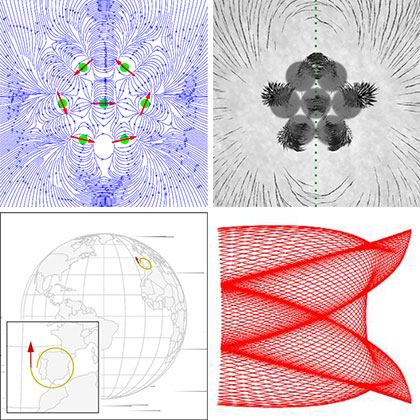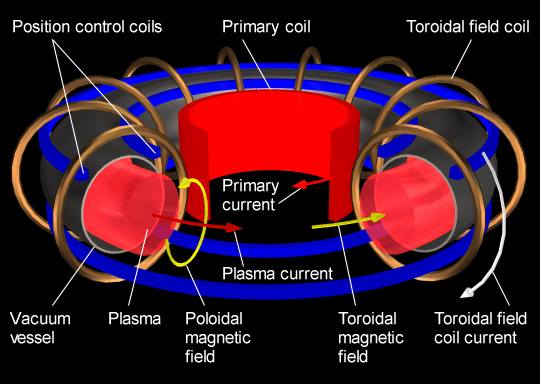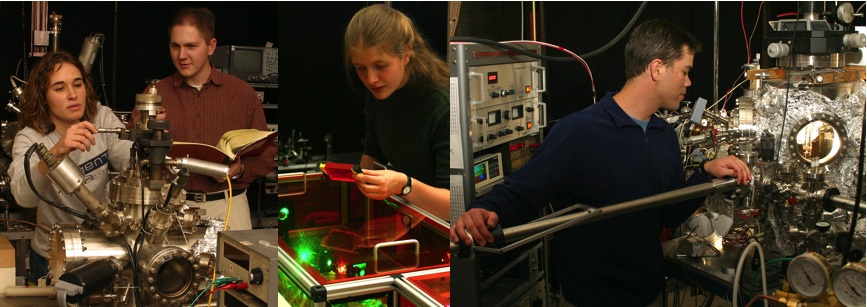Overview
At USU Physics we believe that research is an integral part of the student experience and growth as young scientists. Undergraduates, graduate students, and students from a variety of majors participate every year with our research groups and our outreach activities to local schools, the Cache Valley community, and people throughout the state of Utah.
Physics is the most basic of all the sciences. It strives to describe the most fundamental processes, in the simplest terms, making the fewest assumptions. Despite its pursuit of the fundamental, physics is also extraordinarily useful. The ideas of physics underlie all of the other sciences and engineering, and they form the foundation upon which a large portion of the world’s economy is built.
Our Physics Research program at USU can be broadly broken down into 7 major sub-fields with active research efforts. Our research groups have both theoretical and experimental activities, with the majority of our laboratories being housed in the SER Building on the USU-Logan campus. If you are interested in participating with us in any of our activities or you'd like to visit the facilities, please contact us.
Atmospheric & Space Science
The Physics Department is active in the field of Atmospheric and Space Science, in close association with the interdisciplinary Center for Atmospheric and Space Sciences (CASS) and the Space Dynamics Laboratory (SDL). We also have active collaborations with other groups in the US and around the world.
Atmospheric and space sciences involve many areas of physics, in addition to such disciplines as engineering, chemistry, statistics, and meteorology. At USU, these groups enjoy a strong cooperative relationship and, as a result, the atmospheric and space sciences program has flourished for many years. Space sciences brochure.


Selecting Courses
Once the departmental requirements have been met, students may select courses from the offerings of the associated departments suited for their particular interests and needs while they gain research experience on challenging problems in atmospheric and space sciences.
Available Opportunities
Opportunities are available for students in both experimental and theoretical modeling projects.
The former include participation in instrument development and data analysis related to rocket and satellite projects and related to incoherent-scatter and coherent radars, lidars, optical instruments, and magnetometers. Many of the ground-based observations occur at CASS’s Atmospheric Lidar Observatory, Rayleigh-Scatter Lidar, Sodium Lidar, and Atmospheric Imaging Lab.
The latter projects involve theoretical modeling of physical processes occurring in the mesosphere, thermosphere, and the near-earth plasma environment.
Faculty
Bela Fejer, Ludger Scherliess, Jan Sojka, Mike Taylor, Titus Yuan
Complexity and Nonlinear Dynamics
Complexity science is the study of how surprisingly sophisticated behavior appears at a system level due to the simple interactions of the system’s elementary pieces. Examples range from pattern formation in physical systems to social and economic activity in human populations. Research at USU deals, in part, with understanding information processing in multicellular organisms—with applications to improved climate modeling and error mitigation in state-of-the-art computer chips. Complexity brochure
Nonlinear dynamics, a subset of complexity science, is the study of deterministic systems that exhibit complex and apparently unpredictable behaviors, such as the inherent long-range unpredictability of weather patterns. Examples of nonlinear dynamics research at USU include studies of hysteretic transitions in dipole clusters, periodicity and chaos in magnet interactions, inertial motion on the earth's spheroidal surface, and separations techniques in microfluidic lab-on-a-chip devices


Faculty
Field Theory, Gravity, High Energy Theory
- General Relativity and Gravitation
- Foundations of classical and quantum field theory
- Conformal and scale invariant gravity theories
- Unified field theories
- Black holes and relativistic astrophysics
- Supergravity
- String theory and Holography
- Geometrical and computer algebra methods in mathematical physics.

Faculty
Maria Rodriguez, Charles Torre, Oscar Varela, Jim Wheeler
Plasma Physics
The Plasma Theory and Computation Group at Utah State University works on improving hybrid fluid/kinetic models of fusion plasmas in support of next-step fusion experiments such as the International Thermonuclear Experimental Reactor (ITER). Plasma physics brochure.
Faculty

Nanostructures for Electronics and Photonics
Micro- and nanoscale surface structures allow manipulation of electrons and photons to reveal underlying quantum physics and to advance devices of low-power, small-footprint, and high-performance. Three laboratories in the Physics Department are dedicated to research in fabrication and characterization of nanostructures for electronics and photonics.
The UHV Surface Lab is a research lab equipped with ultrahigh-vacuum-cluster-chamber systems housing a slew of surface preparation and characterization tools. The Nanoscale Device Lab is equipped with tools for microfabrication and characterization to support research and teaching. The Photonics Lab, currently under development, will be equipped with bulk and on-chip optical devices, light sources, and detectors to support research and teaching.
The capabilities of these laboratories and the nature of this field provide ample opportunities for faculty and students to collaborate with researchers across campus and worldwide.

Faculty
Surface Physics
The surface and nanotechnology program is an experimental program with interests in the physics and materials properties of surfaces, interfaces, and adsorbed films.
Dr. Dennison and the USU Materials Physics Group (MPG) has more than 30 years experience studying materials properties and how exposure to extreme environments affects these properties. MPG measures electron-, ion- and photon-induced electron emission; electron-, ion- and UV/VUV radiation-induced changes of bulk conductivity and radiation induced conductivity; permittivity, electrostatic field strength, and radiation-induced arcing; and optical transmission, emissivity, and cathodoluminescence. They have developed and used numerous radiation sources, sensors, and shielding in their research. Their work also includes more than a decade of study on the effects of radiation on materials and spacecraft components.
Nanotechnology and surface physics are closely related; as the size of materials and devices get smaller, both surface and quantum mechanical effects become more important. The critical length scale for their onset is about 100 nm.
A wide range of semiconductor nanostructures and thin films are grown and characterized by the researchers in the USU Surface Physics Program, including elemental semiconductors (Si and Ge) and compound semiconductors (III-V), highly insulating materials, and metals on various substrates. Their structure, growth, dynamics, electronic properties, and optical properties are studied with a wide array of techniques using electron, ion, and photon spectroscopies.
The majority of the experiments and fabrication are done in labs at USU that contain numerous specialized ultrahigh-vacuum surface-analysis chambers and molecular beam epitaxy and chemical vapor deposition growth facilities. Surface physics brochure.


